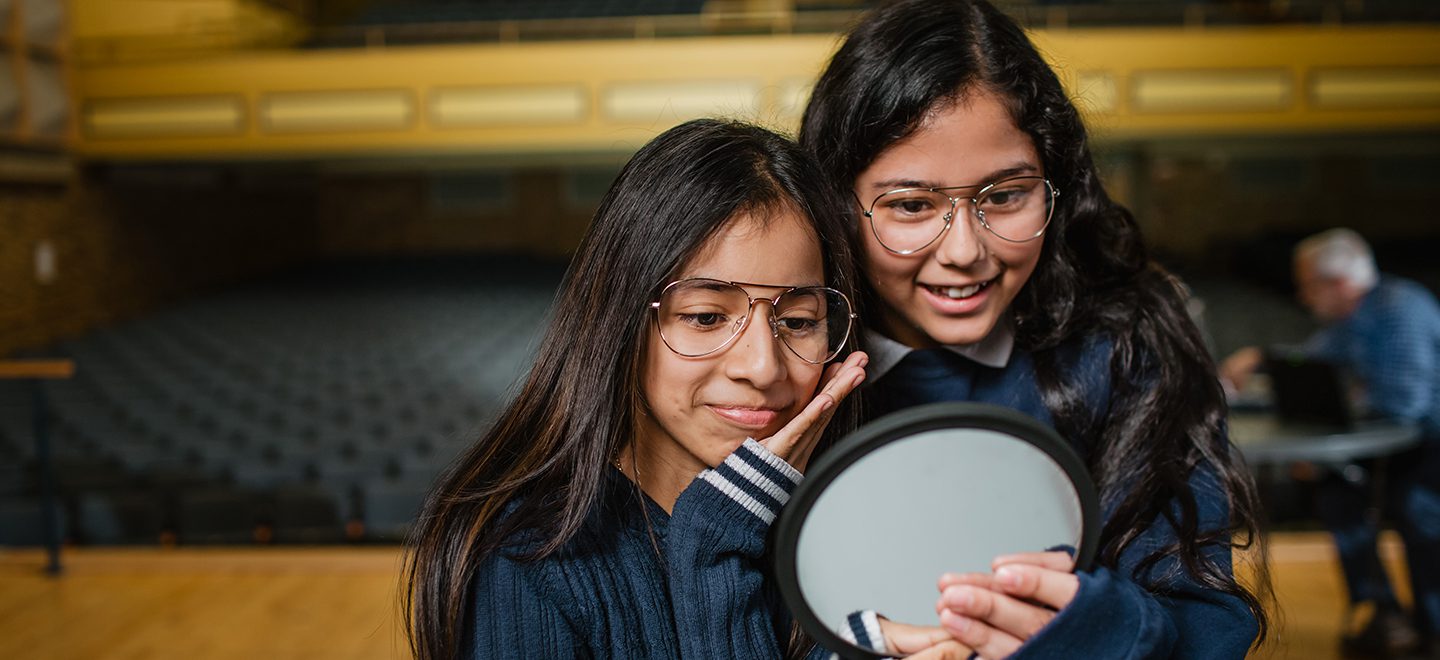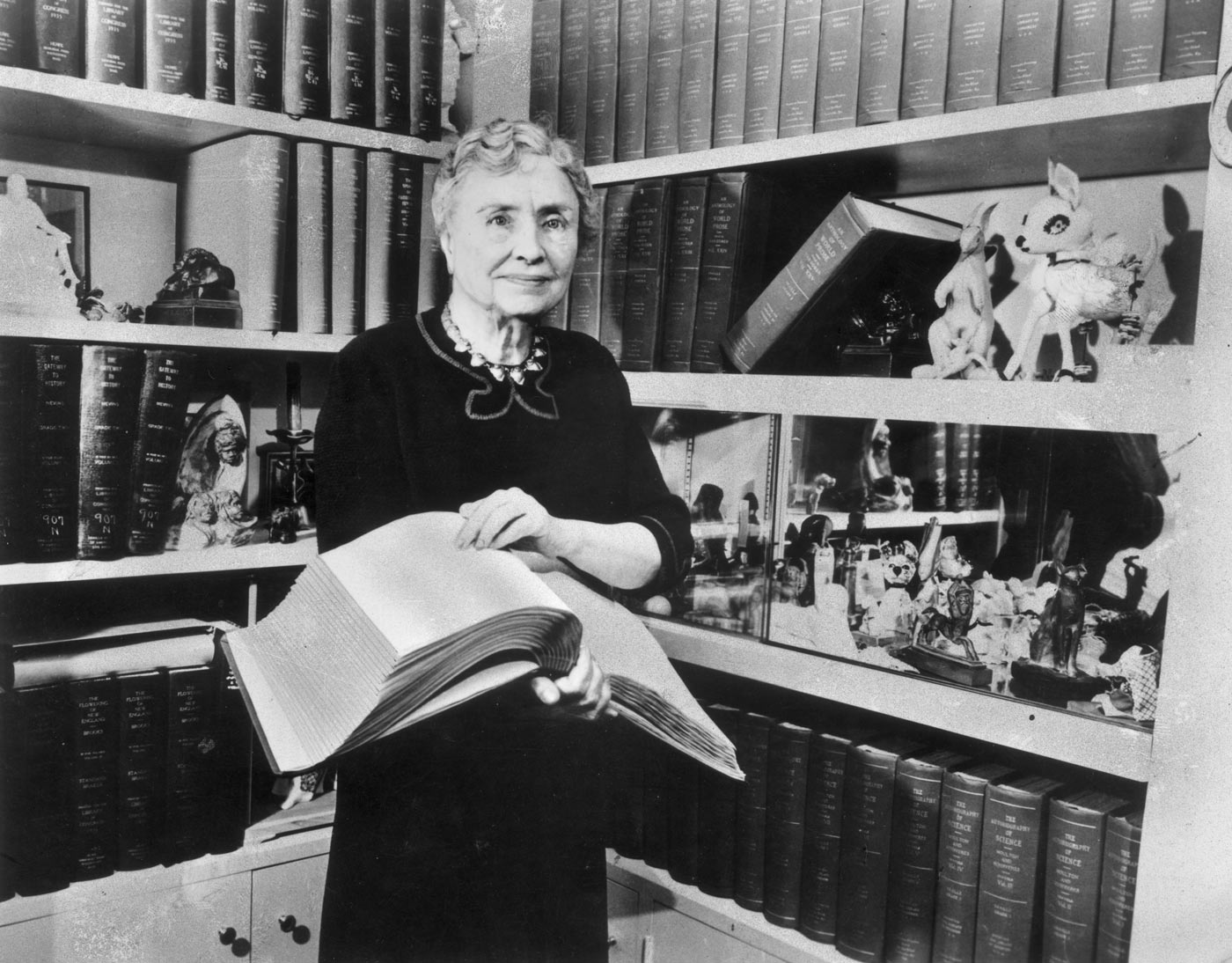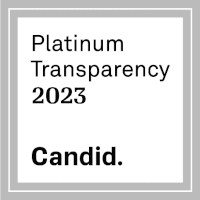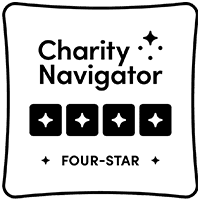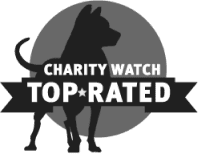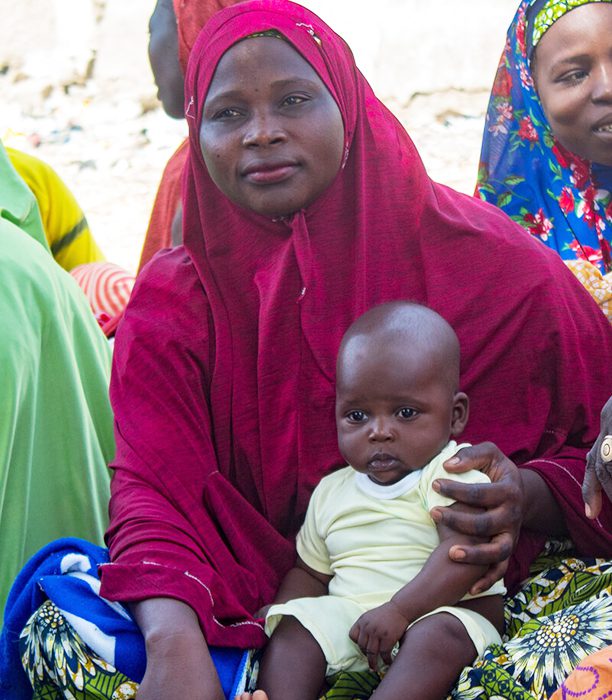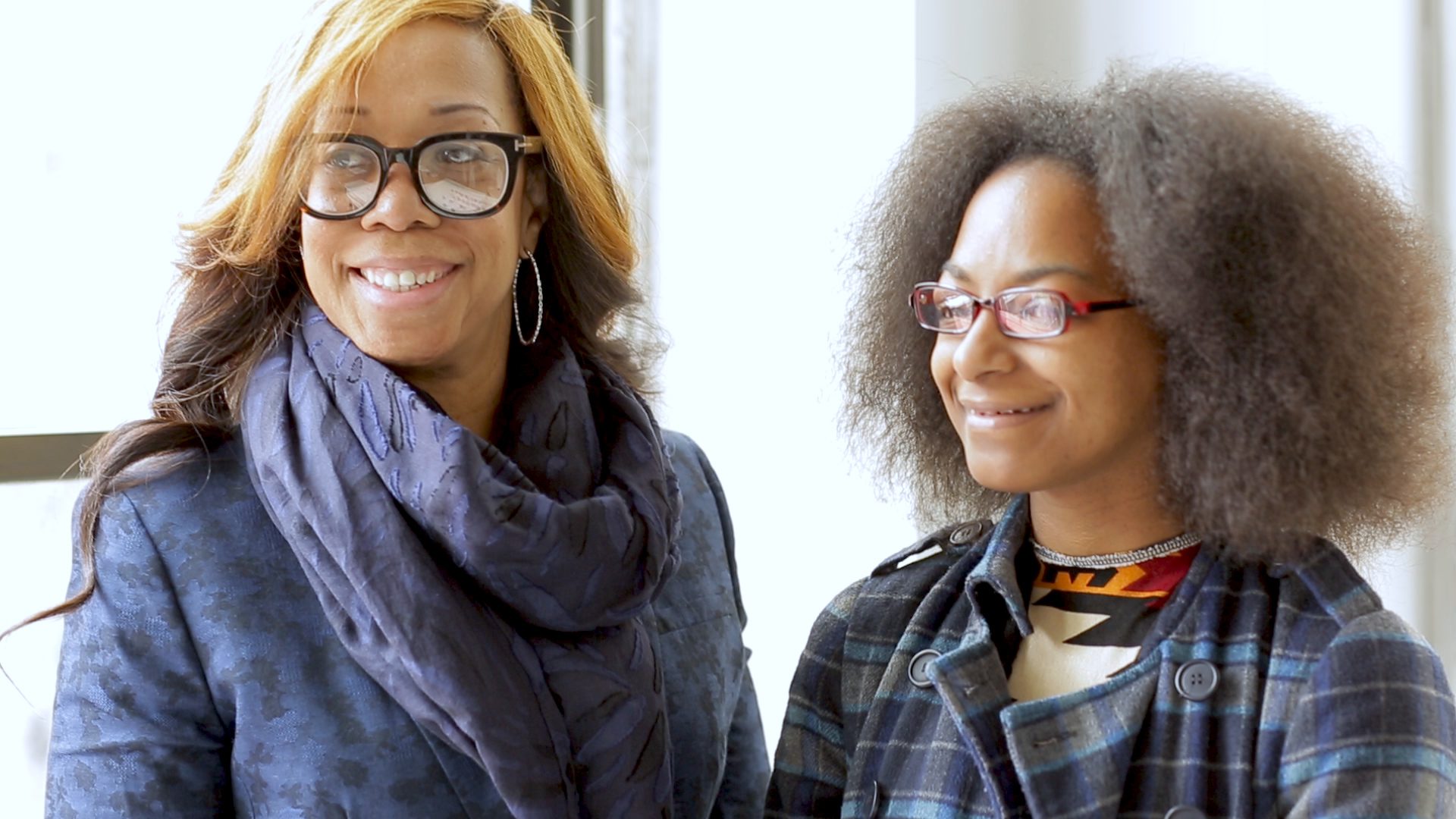
Looking Bravely: COVID-19 and Vision Care in New York City Schools
With schools closed across the country and widespread “stay-at-home” measures in effect to stop the spread of COVID-19, Helen Keller Intl’s US vision programs have been put on hold temporarily.
Uncorrected vision conditions are among the biggest public health problems in the United States, affecting 1 in every 4 children, according to the American Optometric Association.
This week, we spoke to Tonya Suer, our New York Vision Program Manager, about how this interruption will affect children’s ability not only to see, but also to learn.
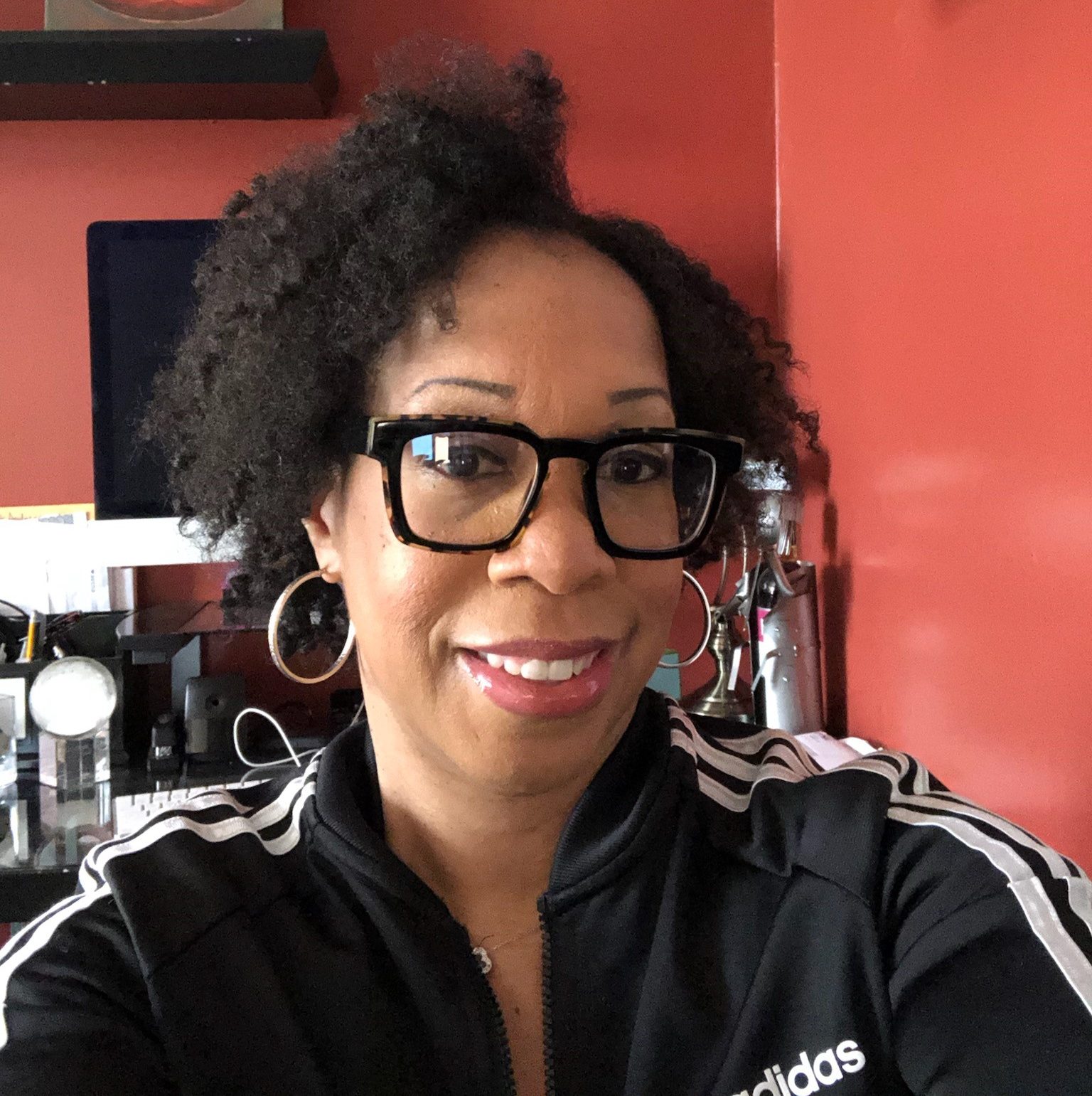
Q: How has COVID-19 impacted Helen Keller’s NY Vision Program?
A: We do the vast majority of our free vision screenings and eyeglass dispensing in schools. When the schools closed in New York City—and in other states where we work—we had to temporarily suspend our programs. That has a domino effect. If we shut down the program, we experience funding cuts, which involve the awful decision to furlough our part-time staff and the eye doctors who work for us on contract.
What is most painful and disturbing is that vulnerable students and families will not receive our vision care services. Vision is one of the most powerful channels for learning; without clear eyesight, students may fall behind their peers during a critical time in their development and struggle to catch up, or even lose interest in school.
With schools in New York City and all over the country closed, students are taking online classes. Those with uncorrected vision problems, whom we cannot reach as a result of this crisis, will struggle to see the screen, read, and learn. That’s a problem.
Q: Can you go deeper into the problem? What exactly does this mean for people in need of eyeglasses and those with vision problems?
A: Our vision programs provide free vision care to vulnerable people who don’t have vision insurance and can’t afford the expense of an eye doctor or the cost of properly prescribed eyeglasses. To make matters worse, optical shops and most eye doctors’ offices are also closed because of physical distancing requirements and the restrictions on operations of nonessential businesses.
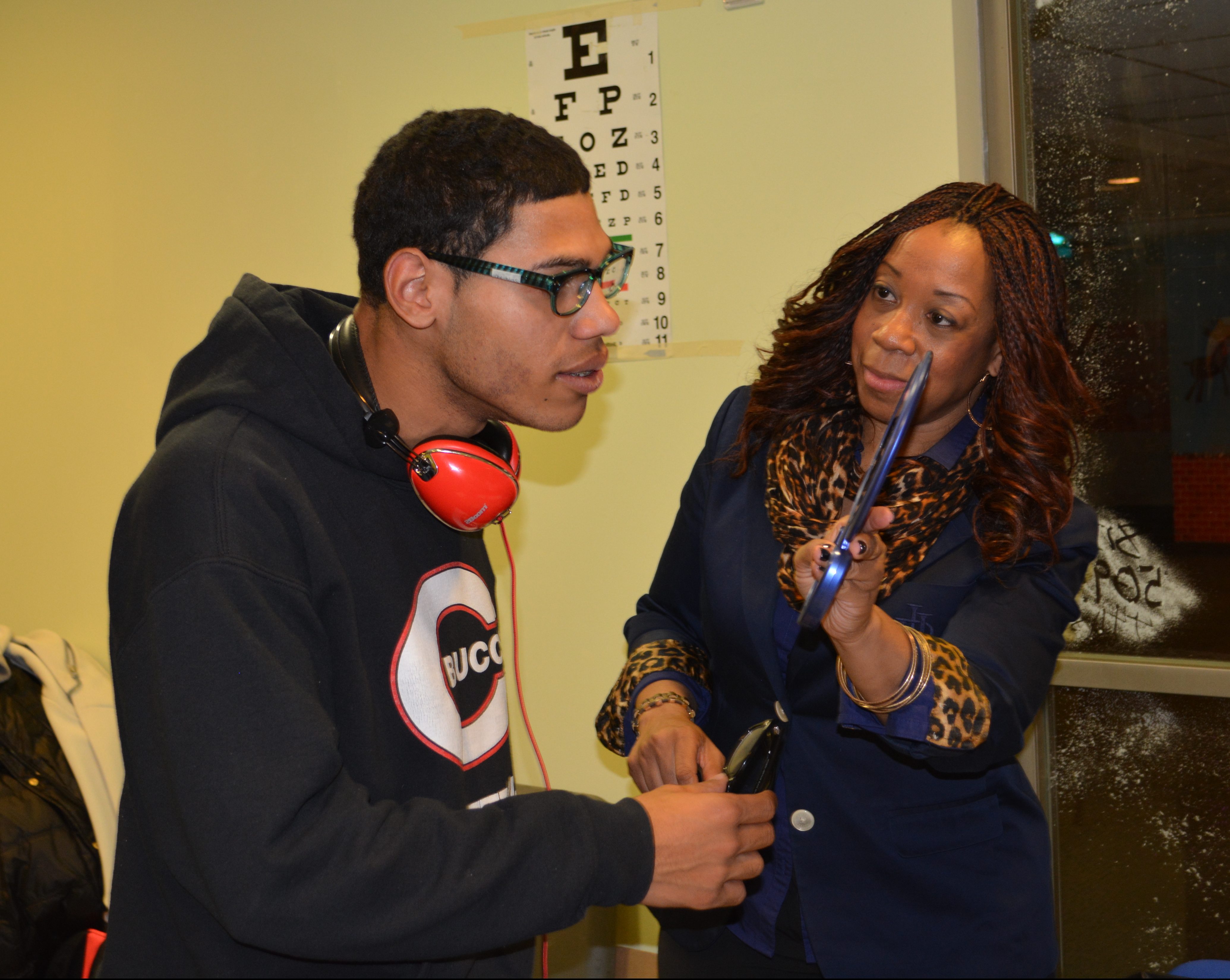
Today in New York City, there is almost no way to get properly prescribed glasses.
Being able to see clearly is always important. In the midst of this crisis, when normal life has totally changed and basic life maintenance is even more challenging, students and vulnerable people need to be able to see so they can manage their lives and function effectively. Poor vision can be isolating. That’s worsened by the social distancing and other challenges people are facing.
Being able to see is a gift that everyone should experience.
Q: Helen Keller’s US Vision Program provides services to people across the country. Are there any populations that are especially vulnerable during the COVID-19 pandemic?
A: All the populations that we work with are already vulnerable. That’s who we see – whether they’re homeless students and families, seniors in need, underserved veterans, etc.
I would say that our clients who are in shelters now and required to “shelter in place” where they are face particular vulnerability. And they need glasses more than ever because they are using their phones and trying to do life maintenance online, reading and looking at computer screens more than ever.
Q: How have the program postponements impacted Helen Keller Intl staff? What are you hearing from them about how they are feeling?
A: In New York City—and in our program areas in New Jersey, California, Ohio, Minnesota, and Wisconsin—we have both full-time, year-round staff as well as seasonal, part-time staff.
All of them are experiencing a lot of anxiety about not being able to provide vision care services to people in need, and about their own jobs. They ask me, “How long is this going to last? Do you have any work for us to do?” They want to get out of the house and get back to work. But I am not willing to put the staff in harm’s way.
My heart goes out to them. For the majority of our seasonal staff, March 13th was their last day of work with us. Some people are struggling. It’s an emotional situation for all of us. When you work with colleagues every day, they become your family. I am concerned about their well-being. Most of our staff live in the communities our programs serve. It’s hard to know our clients and our staff are going without.
Helen Keller Intl, along with state and city governments and our donors, are finding different ways to fill the funding gaps we’re facing during this crisis. That brings us a little relief. I am proud to work for an organization that is bending over backwards to look after its staff.
Q: How are you feeling personally about the COVID-19 crisis and its impact on Helen Keller’s US vision programs?
A: I feel really bad. I want to give each and every one of our clients their glasses. I know how much they need them.
I wear glasses myself. When I am not wearing them, I struggle to do basic things. So, I know it’s a struggle for the kids, veterans, refugees, and elderly people we serve. Not being able to see makes all the other worries and challenges they face much harder.
I’m glad that my team is putting all their energy and passion into looking for solutions. I know we’ll find them.
Q: Speaking of which, what are some possible solutions to delivering vision care to people in need during the pandemic? How can your team stay safe, help the people you serve to stay safe, and mitigate the impact on clients?
A: All of Helen Keller’s vision work in the US — in schools, homeless shelters, or those benefitting vulnerable seniors or underserved veterans—are on hold. They require the doctor and the client to be 10 to 15 inches away from each other. Unfortunately, until it’s safe for people to get that close to each other again, we cannot offer these services.
In New York City, from the start of the school year in September until the schools closed in mid-March, we provided free vision screenings to more than 49,000 students. Of those, we referred about 3,000 students to outside providers, so that they could receive full eye exams to check for more serious eye conditions that we are not equipped to diagnose. Before leaving the screening, those students picked out the frames for their eyeglasses. Typically, we hold onto the frames until we receive the students’ prescriptions from the outside provider. At that point, we order the glasses and distribute them at the schools.
Last week, with the program closed and the time to follow up on previous referrals, we started calling those students to determine if they had obtained a prescription. We’ve spoken with about 160 families so far. Among those, about 80 have current prescriptions. We’ve submitted those to the lab, which will produce finished glasses and mail them directly to the students at home.
When the schools closed, we had already ordered glasses for many other students that we haven’t been able to dispense yet. We have received about 1,100 pairs of glasses over the last few weeks, and we are working with the New York City Department of Education’s Office of School Health to determine the best way to deliver them to the kids who need them.
Q: When will the New York City vision program return to normal operation?
A: It’s going to take a minute. If schools stay closed through June but open again in the fall, we are ready to be there and provide vision services at that point. What will it look like? I don’t know. Will we still have masks on? How will we observe physical distancing? Will we use hand sanitizer after each student? We are not certain yet. Will we be needed? Absolutely. Our free vision services will be needed more than ever. There will be so many people who have missed out on this gift – because that’s really what it is. I know we’ll face overwhelming needs when we return to the schools, to the shelters, to the senior citizen centers. But we will do whatever it takes. We will be where we need to be. We will make it happen. When this is all said and done, we’ll look back and say, “That was a really tough time, but we made it.”
Q: Can you think of another time when Helen Keller Intl has overcome obstacles to keep delivering programs to people who need them?
A: Funding is always a major obstacle, but somehow, some way, we always find the funding that we need to keep our programs going to help people who need us. In fact, we have actually grown and opened new programs to reach more people in the past couple years. There are always obstacles out there. But Helen Keller Intl is innovative. We figure out ways to make things happen.
Q: Do you have any words of solidarity to clients and supporters of Helen Keller Intl?
A: Stay in the house. Wash your hands. And be safe. That’s all we can do right now. If we want to be in schools six months from now providing these services, we have to pay attention, listen, and do what’s asked of us right now. We need to be patient and come up with innovative ways to do things, think outside of the box. We may have to figure out a way to do things differently because we don’t know what the world will look like six months from now. How do we do vision screenings at a distance? How can the doctor provide an eye exam to assess refraction without touching or being physically close to a student? Are there devices we could come up with to do that?
Q: What gives you hope in this challenging time?
A: For me, my faith is what gives me hope. I do see light at the end of the tunnel. Life is a circle. It’s not always perfect, it’s not always pretty, it’s not always cute. You’re going to run into walls that will completely knock you down. You have to have faith, believe, keep a smile on your face because you don’t know who’s relying on your strength. And that’s what I do. I always look at the bright side in everything I do in life. I’ve had cancer four times. Four times. Every single time I looked at what I could do.
I looked for the bright side. You have to do that.
